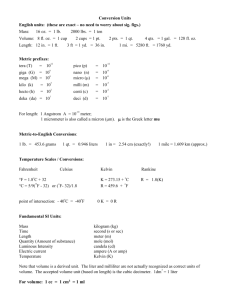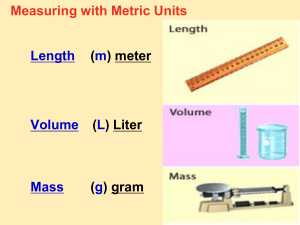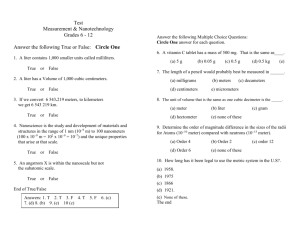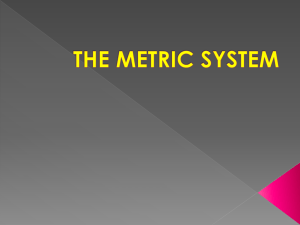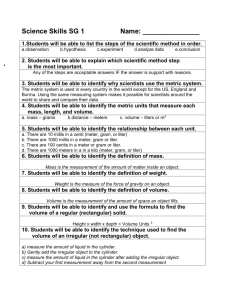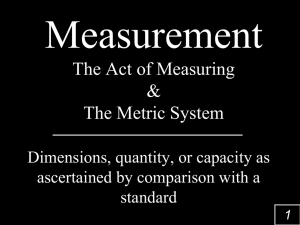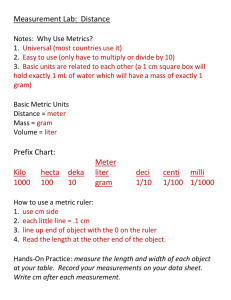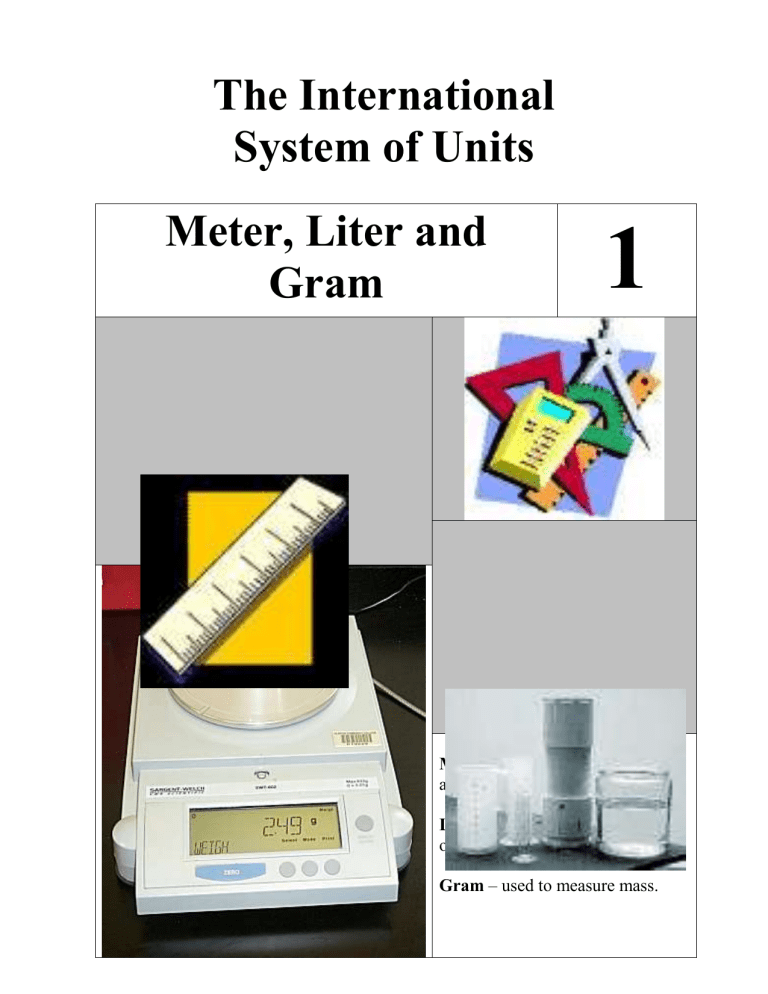
The International System of Units Meter, Liter and Gram 1 Meter – used to measure length and distance. Liter – used to measure capacity or volume. Gram – used to measure mass. The International System of Units The measuring of objects occurs all around you. The food you eat is weighed. You can measure your height and weight. You can measure the lengths of things in your home. You can find the capacity of a container or pitcher, that is, you can find out how much the pitcher will hold. And, before you get dressed in the morning, you can find out the temperature. The earliest units of measure were parts of the body. For example, people measured lengths in terms of hand spans or feet. But these measurements were not uniform. They were not the same for everyone. One person’s foot could be longer or shorter than another’s. The International System of Units (SI) was developed so that people would have a uniform system of measurement. It is not a new system. It was begun in France over 200 years ago. Now it is used in almost every country of the world. All the countries of Europe and South America use the International System of Units. Most international companies use it too. When you start to work, it is very possible that you will work for a company that uses the International System of Units. The International System of Units was started with a length that all scientists knew, the distance from the North Pole to the Equator. This distance was divided into 10,000,000 parts. Each of these parts was called a meter. The meter is the basic unit used to measure length in the International System of Units. Most other SI units are related to the meter. Other units are also used to measure length in the international system of units. Some are smaller than a meter, and some are larger than a meter. All of these units are related. To convert, or change, from one unit to another, you multiply or divide by 10 or a power of 10. Numbers like 100 and 1000 are powers of 10. The name of the basic unit (meter) stays the same, but a prefix is added to this name to tell the exact size of the unit. milli – means one thousandth (.001) centi – means one hundredth (.01) deci – means one tenth (.1) deka – means ten (10) hecto – means one hundred (100) kilo – means one thousand (1000) The SI unit for mass (weight) is the gram and the SI unit for volume is the liter. Just as there are units larger and smaller than the meter, there are units larger and smaller than the liter and the gram. The units for volume and mass are also related by 10 and powers of 10. The chart below lists units of measure for length, volume, and mass. Length Units Volume Units Mass Units kilometer hectometer dekameter METER decimeter centimeter millimeter kiloliter hectoliter dekaliter LITER deciliter centiliter milliliter kilogram hectogram dekagram GRAM decigram centigram milligram Each unit is 10 times larger than the one below it. For example: 1 kilometer = 10 hectometers 1 decimeter = 10 centimeters 1 hectoliter = 10 dekaliters 1 centiliter = 10 milliliters 1 dekagram = 10 grams 1 gram = 10 decigrams If you learn the prefixes and what they mean, it will be easier for you to learn about the International System of Units. Complete the sentences with the choices below. Mass Meter Prefix Kilo Volume Liter Deka Convert Power of 10 1. Length Milli Gram Centi Deci Hecto International System of Units is a system of measurement based on the meter, liter, and gram. 2. The is used to measure distance or . 3. The is used to measure capacity or . 4. The is used to measure weight or 5. A the unit. is added to meter, liter, or gram to tell the exact size of 6. To , or change, from one unit to another you multiply or divide by 10 or a . 7. The prefix means 10. 8. The prefix means .01. 9. The prefix means 100. 10. The prefix means .1. 11. The prefix means 1000. 12. The prefix means .001. Word Scramble. Unscramble each of the following words. 13. efiprx 14. mvoule 15. treem 16. lliikoter 17. mmlliiagr .

